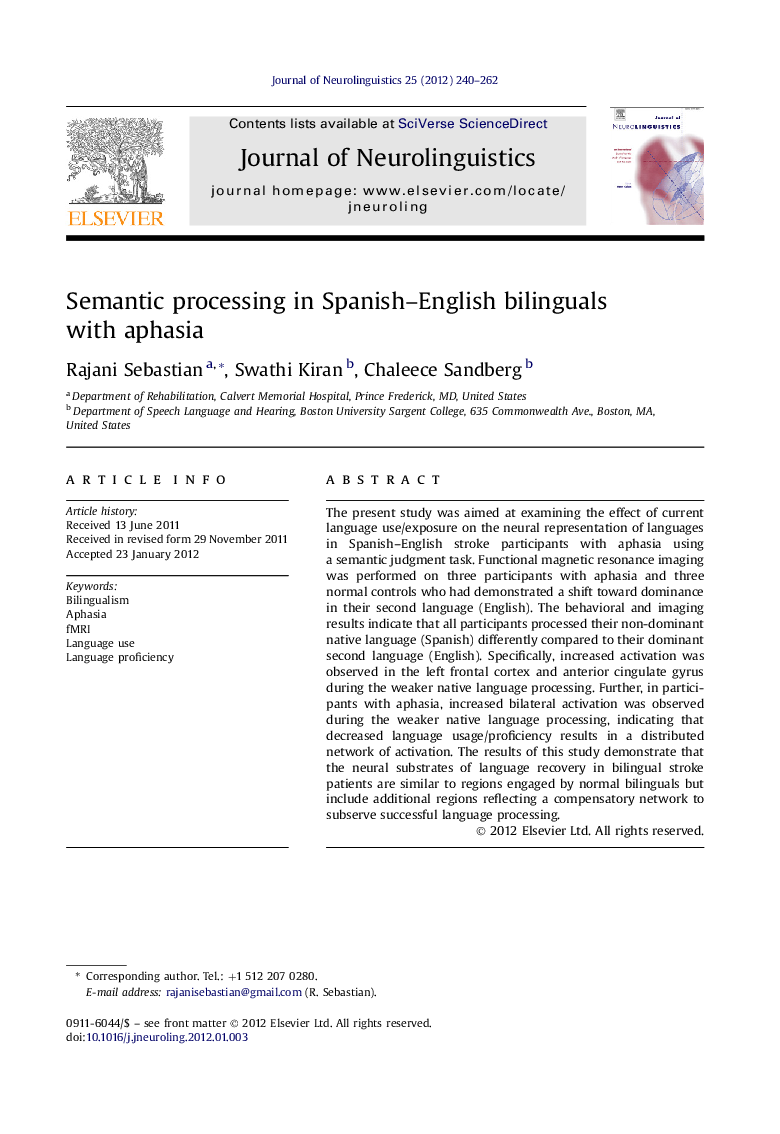| Article ID | Journal | Published Year | Pages | File Type |
|---|---|---|---|---|
| 911944 | Journal of Neurolinguistics | 2012 | 23 Pages |
The present study was aimed at examining the effect of current language use/exposure on the neural representation of languages in Spanish–English stroke participants with aphasia using a semantic judgment task. Functional magnetic resonance imaging was performed on three participants with aphasia and three normal controls who had demonstrated a shift toward dominance in their second language (English). The behavioral and imaging results indicate that all participants processed their non-dominant native language (Spanish) differently compared to their dominant second language (English). Specifically, increased activation was observed in the left frontal cortex and anterior cingulate gyrus during the weaker native language processing. Further, in participants with aphasia, increased bilateral activation was observed during the weaker native language processing, indicating that decreased language usage/proficiency results in a distributed network of activation. The results of this study demonstrate that the neural substrates of language recovery in bilingual stroke patients are similar to regions engaged by normal bilinguals but include additional regions reflecting a compensatory network to subserve successful language processing.
► We examined semantic processing in bilingual Spanish–English aphasics and normal controls. ► All participants demonstrated a shift toward dominance in their second language (English). ► Increased activation was observed in the left frontal cortex and anterior cingulate gyrus during Spanish processing. ► This indicates that decreased language usage and proficiency results in a distributed network of activation.
